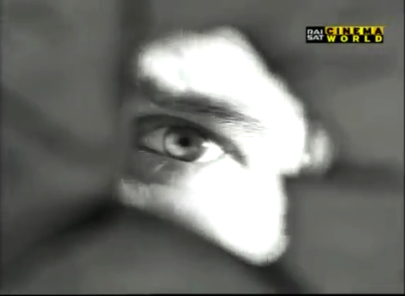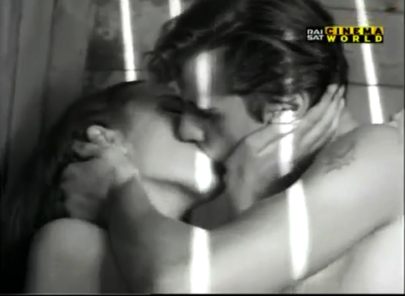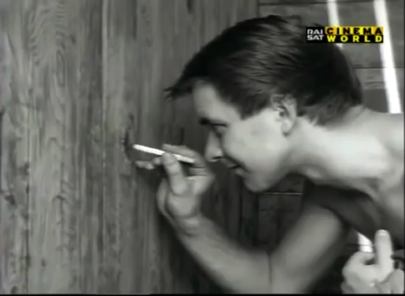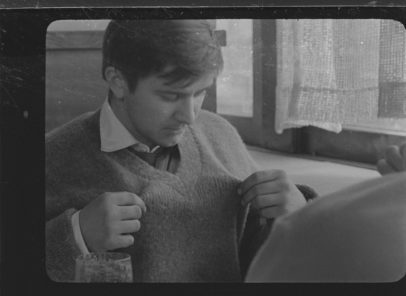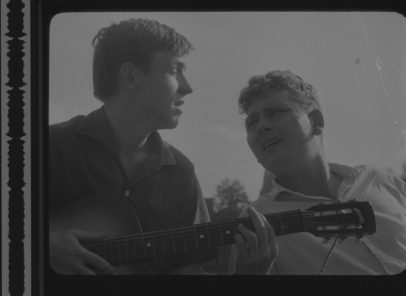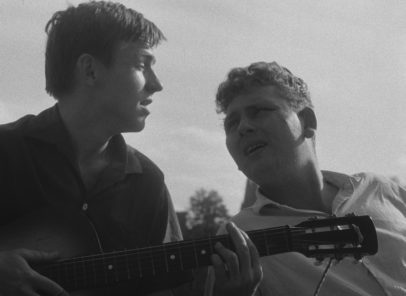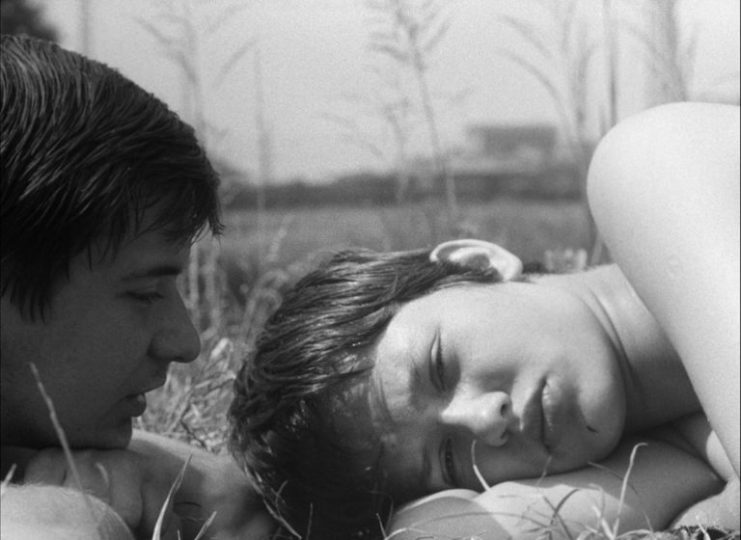The aim of the digital restoration of Černý Petr (Black Peter) was to bring the film as close as possible to the state of 1964 when the film premièred in Czechoslovak cinemas. Aside from the original negative, what has also been preserved in the collections of the National Film Archive are a few duplicate materials (duplicate positive and composite duplicate negative) and eleven composite copies not just from the 1960s, but from later times as well, in which the film was repeatedly screened in Czechoslovakia and abroad.
The restoration itself was preceded by exploring non-film materials (archive documents, published sources, interviews with contemporary witnesses, etc.) to get as much information as possible on the circumstances of the film’s production and screenings. At the same time, also film materials were analysed as a potentially valuable source of information not only on the film itself, but on the procedures back in its time in general. The comparing of the preserved materials has shown that aside from the film version that was released, one more copy has been preserved being about 100 m longer than the original negative and containing extra scenes from the self-service shop, where the manager explains to Petr how to approach the customers and sell more products. These scenes weren’t included in the final version of the film and probably it’s a copy used by Filmexport to show the film to interested parties from abroad before the première. Neither the censorship documents, nor the interviews with Ivan Passer and Miloš Forman have shown that the scenes would be removed before the première on command from officials. One can therefore assume that the final version of the film no longer containing these scenes was decided upon by the filmmakers themselves.
Cut-out scene from the film
Moreover, there was a dubbed version for distribution in Italian speaking countries, for which a few additional scenes were subsequently shot from the changing rooms at the swimming pool. While the original version screened in Czechoslovakia only contains innocent shots of Pavla’s legs secretly observed by Petr through a crevice in the wooden partition, for the Italian version, a much longer and more erotic scene was created in which Petr watches with interest a naked girl and a couple of lovers in the adjacent changing rooms.
The multiplicity of preserved versions not only reflects the circumstances of the film’s production and the distribution practice beyond the borders of Czechoslovakia, but more generally, it indicates the multiplicity nature of filmmaking, manifesting itself (not only) in working with archive films. Setting a restoration priority is thus an essential requirement defining the film version at which the restoration should be aimed.
Source materials
As a source material for digitalization, the original acetate black-and-white Agfa negative was selected being the lowest generation and highest quality film stock. The material divided into ten small parts was significantly worn down throughout its length, the photographic part being very mechanically damaged (many notches, continuous scratches, distortions of the beginnings and ends of the individual parts, perforations). Moreover, in some parts one or more frames of the photographic material were missing. As for the missing frames, it was necessary for the digitalization to use materials of subsequent generations, in which these frames have been preserved. As a material of the closest generation, the original duplicate positive was used to this purpose. The source materials were scanned in 4K resolution, which was also used in post-production and finalization.
Digital image restoration
To return the film to a version most faithful to its initial release, it was decided in the spirit of conservative restoration to remove the marks of time and use, but not the defects and imperfections reflecting the limitations of the time or resulting from the technologies used. However, it is to be noted that the decision making process regarding these defects was always carried out with respect to the work and considering the fact that the defects left in the cleaned high resolution image shouldn’t be too disturbing to divert the viewer’s attention form the film itself. Taking into account the individual particular artefacts, the selected approach was thus rethought to achieve a balance between the respect to the film as a piece of art and the film as a material object with its own characteristics and history.
Typical elements left in the film include those that were created during shooting or laboratory processing, and as such reflecting the then technologies and production processes. Commonly, these are permeation marks for the projectionist stamped on the negative at the end of every part and, to a limited extent, also elements resulting from producing trick shots in laboratories. By contrast, removed were all damages caused by wearing down and ageing of the film, be it minor dirt, scratches and distortions or more extensive retouching of areas blocked by adhesion tape used for fixing perforations or by glue in the image. Also a few most prominent hairs from the camera shutter were retouched, which would otherwise look very disturbing in the cleaned image. Throughout the whole length of the film, automatic image stabilization was used and it was also slightly deflickered. The stabilization was performed to only compensate for the jitter resulting from the shrinkage of the material due to ageing or difficult passing of the film through the scanner around the splices, and not where it was clearly a consequence of the production technology or laboratory processing. A similar principle was employed in deflickering the image, only applied so as not to disturb the original characteristics of the film image and only compensate for the ageing of the material and possible consequences of imperfect laboratory processing (insufficient washing out of chemicals used in developing the film).
Mechanical damage around the splice before and after the restoration
Mechanical damage of surface areas before and after the restoration
Lighting and tone corrections
As the main source of image digitalization was the original negative not containing final colour corrections, it was necessary to subsequently modify the image according to a selected reference copy for it to correspond to the character of the distribution copies. That’s why from the preserved materials, two highest quality laboratory processed original copies were selected as a reference on Agfa, a material on which the film was distributed when it was first released. In performing the corrections, the original characteristics of the reference copies were preserved including slight tone changes in switching between the camera negative and trick shots from a duplicate negative; typically, these were subtitle sequences. As a result, the final version of the film respects the integrity of selected reference copies reflecting the then procedures, limitations of available technologies and film materials used.
Digital sound restoration
As the most suitable material for sound digitalization, the duplicate positive was chosen whose sound track was of good quality throughout its length and only very little mechanically damaged. Just like in restoring the image, in restoring the sound the aim was to mediate to today’s viewers under current technological conditions the experience of the then audiences. What was thus unacceptable were any changes removing acoustic imperfections or defects created during the shooting or post production (such as a few slightly asynchronous passages). Only removed were defects caused by the wearing down and ageing of film materials (cracking, etc.) and the overall form was adapted to the parameters of the current sound reproduction chain so as to simulate the then acoustic conditions of cinemas.
After the digitalization, metadata describing the whole process was added to the image and sound and the final outputs were stored in the archiving system of the National Film Archive together with the applicable documentation. The original film materials were returned to the repositories, and will continue to be stored there still being a key archiving medium and a guarantee of the film’s long life. Nevertheless, the digital restoration allowed for adapting the film to modern technological conditions, thanks to which it can not only be kept in the repositories, but also in the memories of new generations of film viewers.
Note: The film was restored in the Cinepost Barrandov Studio in Prague in 2017. The digital restoration project was supervised by a team of NFA experts in cooperation with external experts. Persons involved in the digital restoration included Tereza Frodlová (restoration supervision), Jonáš Svatoš (digitalization technologist), Pavel Rejholec and David Šmitmajer (sound restoration), Branislav Daniš, Jan Malíř, Martin Šec, Ervín Sanders (colour correction supervision) and Kateřina Fojtová (project coordination).
